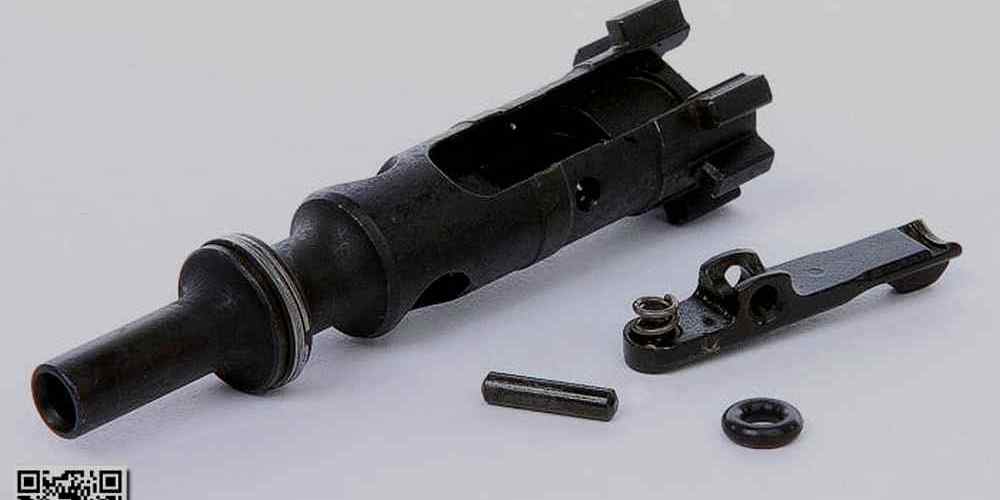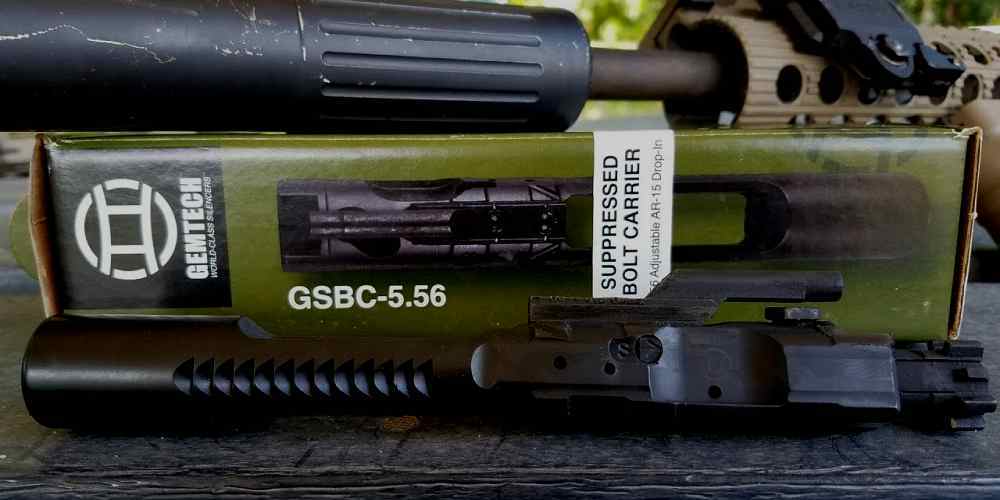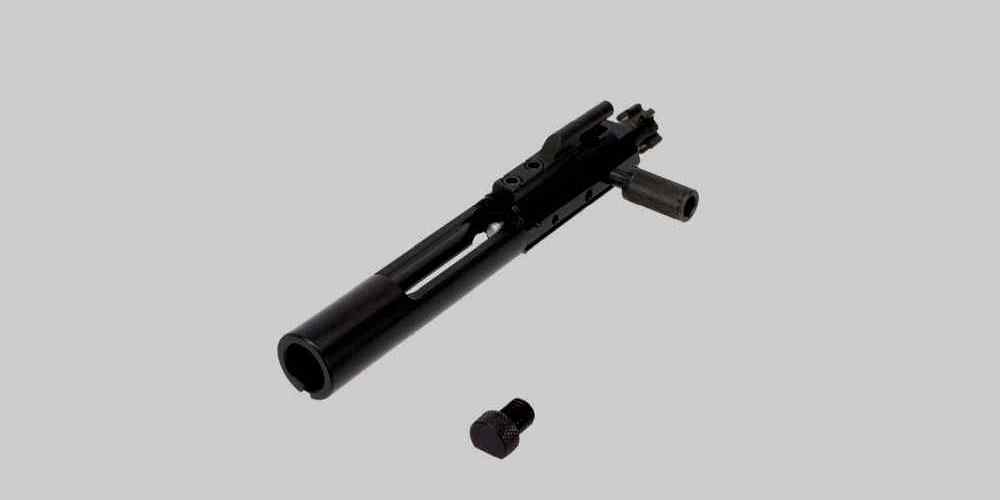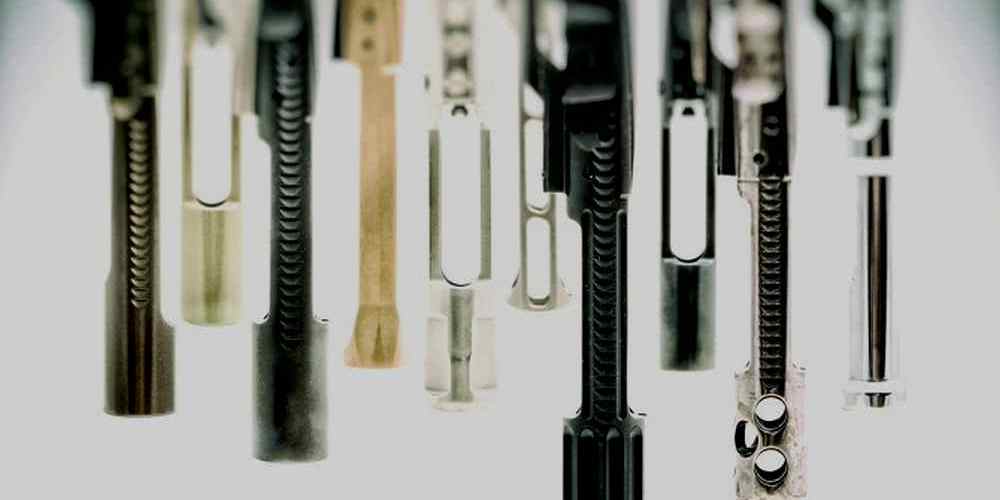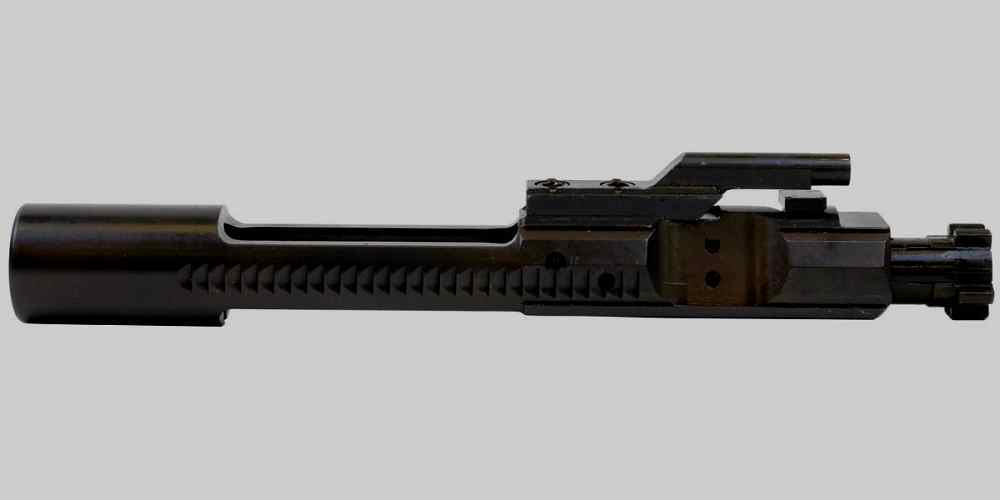“Revolutionizing the AR15 BCG game with cutting-edge innovations and technologies.”
Lightweight Materials in AR15 BCGs
The AR15 bolt carrier group (BCG) is a critical component of the AR15 rifle, responsible for cycling rounds and ensuring the firearm functions properly. As technology continues to advance, manufacturers are constantly looking for ways to improve the performance of AR15 BCGs. One area of focus in recent years has been the use of lightweight materials in BCG construction. Traditionally, AR15 BCGs have been made from steel, a durable and reliable material. However, steel is also heavy, adding unnecessary weight to the rifle. In an effort to reduce weight and improve overall performance, manufacturers have begun incorporating lightweight materials such as titanium and aluminum into BCG design. Titanium is an ideal material for ar15 bcgs due to its high strength-to-weight ratio. It is incredibly strong and durable, yet significantly lighter than steel. This allows for a lighter overall bcg without sacrificing strength or reliability. Titanium BCGs are also resistant to corrosion, making them an excellent choice for shooters who frequently expose their rifles to harsh environments. Aluminum is another lightweight material that has gained popularity in AR15 BCG construction. While not as strong as titanium, aluminum is still a viable option for shooters looking to reduce weight without compromising performance. Aluminum BCGs are often used in competition rifles where speed and maneuverability are key factors. In addition to titanium and aluminum, manufacturers are also experimenting with other lightweight materials such as carbon fiber and polymer composites. These materials offer unique properties that can further enhance the performance of AR15 BCGs. Carbon fiber, for example, is incredibly strong and lightweight, making it an excellent choice for high-performance rifles. Polymer composites are also being used in AR15 BCG construction to reduce weight and improve durability. These materials are highly resistant to wear and corrosion, making them an attractive option for shooters who demand reliability in their firearms. Overall, the use of lightweight materials in AR15 BCGs is a trend that is likely to continue in the future. As technology advances and new materials become available, manufacturers will have even more options for creating high-performance BCGs that are both lightweight and durable. In conclusion, the future of AR15 BCGs looks bright with the continued development of lightweight materials and innovative technologies. Shooters can expect to see more titanium, aluminum, carbon fiber, and polymer composite BCGs on the market in the coming years. These materials offer unique advantages that can improve the performance of AR15 rifles, making them a popular choice among shooters looking for a competitive edge. As technology continues to evolve, the possibilities for AR15 BCG design are endless, and shooters can look forward to even more exciting innovations in the future.
Enhanced Coating Technologies for Improved Performance
The AR15 bolt carrier group (BCG) is a critical component of the popular rifle platform, responsible for cycling rounds and ensuring reliable operation. As technology continues to advance, manufacturers are constantly looking for ways to improve the performance of BCGs through innovative coatings and materials. In this article, we will explore some of the latest developments in coating technologies that are shaping the future of AR15 BCGs. One of the most significant advancements in BCG coatings is the use of advanced materials such as titanium nitride (TiN) and diamond-like carbon (DLC). These coatings offer superior hardness and lubricity, resulting in reduced friction and wear on the BCG components. TiN coatings, in particular, have gained popularity for their gold appearance and excellent corrosion resistance. DLC coatings, on the other hand, provide a sleek black finish and exceptional durability. In addition to advanced materials, manufacturers are also exploring new coating processes to further enhance the performance of AR15 BCGs. One such process is Physical Vapor Deposition (PVD), which allows for the precise application of thin, uniform coatings with high adhesion strength. PVD coatings can improve the wear resistance and lubricity of BCG components, leading to smoother operation and increased longevity. Another emerging trend in BCG coatings is the use of hybrid or multi-layer coatings that combine different materials to achieve specific performance characteristics. For example, a BCG may feature a base layer of TiN for corrosion resistance, topped with a layer of DLC for enhanced hardness and lubricity. These hybrid coatings offer a unique combination of properties that can improve the overall performance of the BCG in various operating conditions. Furthermore, manufacturers are exploring innovative surface treatments such as nitriding and ion bonding to improve the hardness and wear resistance of BCG components. Nitriding involves diffusing nitrogen into the surface of the metal to create a hard, wear-resistant layer, while ion bonding uses a plasma-assisted process to deposit a thin, durable coating on the surface. These treatments can significantly increase the lifespan of BCGs and reduce the need for frequent maintenance. As the demand for high-performance AR15 BCGs continues to grow, manufacturers are investing in research and development to push the boundaries of coating technologies. By incorporating advanced materials, processes, and treatments, they are able to create BCGs that offer superior reliability, durability, and performance. Whether you are a competitive shooter, a law enforcement officer, or a recreational gun enthusiast, these innovations in BCG coatings are sure to enhance your shooting experience. In conclusion, the future of AR15 BCGs is bright with the advancements in coating technologies that are revolutionizing the industry. From advanced materials like TiN and DLC to innovative processes such as PVD and hybrid coatings, manufacturers are constantly pushing the boundaries of what is possible. With these cutting-edge technologies, AR15 BCGs are becoming more reliable, durable, and efficient than ever before. So, keep an eye out for these exciting developments in the world of BCG coatings, as they are sure to shape the future of the AR15 platform for years to come.
Integration of IoT and Smart Features in BCG Design
The AR15 Bolt Carrier Group (BCG) has long been a critical component of the AR15 platform, responsible for cycling rounds and ensuring the firearm functions properly. As technology continues to advance, the future of AR15 BCGs is looking brighter than ever, with innovations and technologies that promise to enhance performance and user experience. One of the most exciting developments in the world of AR15 BCGs is the integration of Internet of Things (IoT) and smart features into their design. IoT technology allows devices to connect and communicate with each other, opening up a world of possibilities for firearms. Imagine a BCG that can track round count, monitor wear and tear, and even alert the user when maintenance is required. These smart features not only make it easier for users to keep their firearms in top condition but also provide valuable data for manufacturers to improve their products. In addition to IoT integration, advancements in materials and manufacturing processes are also shaping the future of AR15 BCGs. For example, the use of advanced alloys and coatings can improve durability and reduce friction, leading to smoother cycling and increased reliability. By incorporating these materials and processes into their designs, manufacturers can create BCGs that are lighter, stronger, and more resistant to wear and corrosion. Another area of innovation in AR15 BCGs is the development of adjustable gas systems. These systems allow users to fine-tune the amount of gas that is used to cycle the action, providing greater control over recoil and cycling speed. By adjusting the gas system, users can optimize their firearm for different types of ammunition or shooting conditions, improving accuracy and performance. Furthermore, the rise of 3D printing technology is also revolutionizing the way AR15 BCGs are designed and manufactured. 3D printing allows for complex geometries and customizations that were previously impossible with traditional manufacturing methods. This means that manufacturers can create BCGs that are tailored to the specific needs and preferences of individual users, resulting in a more personalized and optimized shooting experience. As the future of AR15 BCGs continues to evolve, it is clear that innovation and technology will play a crucial role in shaping the industry. From IoT integration and smart features to advancements in materials, manufacturing processes, and adjustable gas systems, the possibilities for improving AR15 BCGs are endless. By staying at the forefront of these developments, manufacturers can create BCGs that are not only more reliable and durable but also more user-friendly and customizable. In conclusion, the future of AR15 BCGs is bright, with a host of innovations and technologies on the horizon that promise to enhance performance and user experience. By embracing IoT integration, advanced materials, adjustable gas systems, and 3D printing technology, manufacturers can create BCGs that are more reliable, durable, and customizable than ever before. As the industry continues to evolve, it is exciting to think about the possibilities that lie ahead for AR15 BCGs and the impact they will have on the shooting community.
Advancements in Bolt and Carrier Group Geometry
The AR15 bolt carrier group (BCG) is a critical component of the popular rifle platform, responsible for cycling rounds and ensuring reliable operation. Over the years, advancements in BCG design have led to improved performance, durability, and ease of maintenance. As technology continues to evolve, the future of AR15 BCGs looks promising, with innovative features and materials on the horizon. One area of focus for BCG innovation is geometry. By optimizing the shape and dimensions of the bolt and carrier, manufacturers can enhance reliability and reduce wear on the components. For example, some companies are experimenting with new coatings and surface treatments to reduce friction and improve corrosion resistance. These advancements can lead to smoother cycling and increased longevity for the BCG. Another trend in BCG design is the incorporation of lightweight materials. By using advanced alloys and composites, manufacturers can reduce the overall weight of the BCG without sacrificing strength or durability. This can lead to improved handling and reduced fatigue for the shooter, especially during extended shooting sessions. Additionally, lighter BCGs can contribute to faster cycling and reduced felt recoil, enhancing the overall shooting experience. In addition to geometry and materials, advancements in manufacturing processes are also shaping the future of AR15 BCGs. With the rise of additive manufacturing technologies like 3D printing, companies can now produce complex BCG designs with greater precision and efficiency. This allows for more customization options and faster turnaround times for new product development. As these technologies continue to mature, we can expect to see even more innovative BCG designs hitting the market. One exciting development in BCG technology is the integration of electronic components. Some companies are exploring the use of sensors and microcontrollers to monitor BCG performance in real-time. This data can be used to optimize cycling dynamics, detect malfunctions, and provide feedback to the shooter. By incorporating smart technology into the BCG, manufacturers can offer a new level of control and customization for the end user. As the AR15 platform continues to evolve, so too will the bolt carrier group. With advancements in geometry, materials, manufacturing processes, and electronic integration, the future of AR15 BCGs looks bright. Shooters can expect to see more reliable, durable, and high-performance BCGs hitting the market in the coming years. Whether you’re a competitive shooter, a tactical operator, or a recreational enthusiast, these innovations in BCG technology are sure to enhance your shooting experience. Stay tuned for the latest developments in AR15 BCGs, as the industry continues to push the boundaries of what’s possible.
Impact of 3D Printing on AR15 BCG Manufacturing
The AR15 bolt carrier group (BCG) is a critical component of the AR15 rifle, responsible for cycling rounds and ensuring the firearm functions properly. As technology continues to advance, the manufacturing process for AR15 BCGs is evolving, with 3D printing playing a significant role in shaping the future of this essential firearm part. 3D printing, also known as additive manufacturing, is a process that creates three-dimensional objects by layering materials based on a digital model. This technology has revolutionized the manufacturing industry, offering numerous benefits such as increased design flexibility, reduced lead times, and cost-effective production. In the realm of AR15 BCG manufacturing, 3D printing has opened up new possibilities for creating innovative designs and materials that were previously unattainable through traditional manufacturing methods. One of the key advantages of 3D printing is the ability to produce complex geometries with intricate details, allowing for enhanced performance and functionality in AR15 BCGs. By utilizing 3D printing, manufacturers can experiment with different materials and structures to optimize the weight, durability, and overall performance of AR15 BCGs. For example, lightweight materials such as titanium and carbon fiber can be used to reduce the overall weight of the BCG without compromising strength and reliability. Furthermore, 3D printing enables manufacturers to customize AR15 BCGs to meet specific user requirements, such as enhanced ergonomics, improved cycling speed, and reduced recoil. This level of customization is a game-changer for firearm enthusiasts who are looking to personalize their AR15 rifles for optimal performance. In addition to design flexibility and customization, 3D printing also offers significant cost savings for AR15 BCG manufacturers. Traditional manufacturing methods often require expensive tooling and machining processes, which can drive up production costs. With 3D printing, manufacturers can produce AR15 BCGs more efficiently and cost-effectively, ultimately making high-quality firearm components more accessible to consumers. As 3D printing technology continues to advance, we can expect to see even more innovations in AR15 BCG manufacturing. From improved materials and design capabilities to enhanced performance and customization options, the future of AR15 BCGs looks promising with the integration of 3D printing technology. In conclusion, the impact of 3D printing on AR15 BCG manufacturing is undeniable. This innovative technology has revolutionized the way AR15 BCGs are designed, produced, and customized, offering a new level of performance and functionality for firearm enthusiasts. As we look towards the future, it’s exciting to see how 3D printing will continue to shape the evolution of AR15 BCGs, pushing the boundaries of what is possible in firearm component manufacturing.





